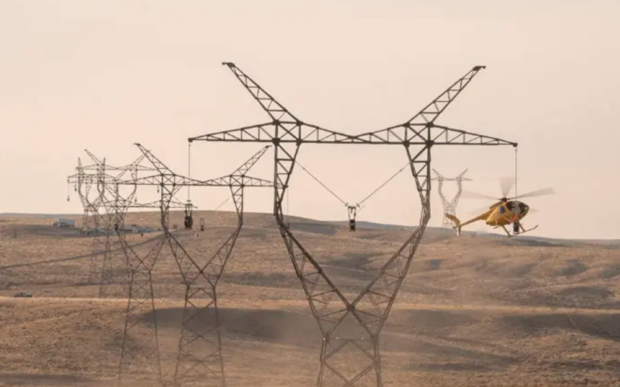has been granted a patent for a remotely controlled unmanned aerial device that can safely operate near high voltage powerlines. The device includes an electrically conductive shield that encapsulates the unmanned aerial vehicle, allowing it to transfer the powerline potential without affecting its components. The system aims to protect the vehicle from electrical charge while in contact with the powerlines.
A recently granted patent (Publication Number: US11760485B2) describes a remotely controlled aerial system designed to safely bond to energized high voltage powerlines. The system includes an unmanned aerial vehicle (UAV) and an attachment that is deployed on the UAV. The attachment is covered by a removable, electrically conductive, flexible covering that forms a Faraday cage around both the UAV and the attachment. This covering protects the UAV and the attachment from electrical charge during the bonding process, allowing the charge to flow around the Faraday cage while keeping the UAV and attachment electrically unaffected.
The patent claims also mention that the geometric form of the covering corresponds to the suspension on which the attachment is held, and the covering encapsulates the suspension as well. The covering can be made from various materials, including embedded metallic fibers or strands, electrically conductive fabric, or embedded carbon fiber. Another option is a material blend of fire retardant components and electrically conductive, metallic components, with the fire retardant components making up 75% of the material and the metallic components making up 25%.
The covering is designed to allow sensor and communication radiation to pass through while maintaining the Faraday cage around the UAV and the attachment. One example of a suitable material is a barehand suit material that consists of non-electrically conductive threads and metallic threads woven in a grid pattern. The covering also includes fastening elements to securely attach it to the UAV and the attachment.
The patent also outlines a method for using this aerial system to bond to powerlines safely. The method involves encapsulating the UAV and the attachment within the covering, operatively coupling the covering to both, flying the encapsulated UAV and attachment over the powerlines, and allowing the electrical charge generated during the bonding process to flow around the Faraday cage, keeping the UAV and attachment electrically unaffected. The method also includes allowing sensor and communication radiation to pass through the covering while maintaining the Faraday cage.
Overall, this patent describes a system and method for remotely controlling a UAV to bond to high voltage powerlines without harm. The use of a Faraday cage-like covering protects the UAV and attachment from electrical charge, ensuring safe operation during the bonding process.
Source: World Construction Network

